Mindfulness is much more than simply ‘present moment awareness’. There are many teaching styles, exercises, and theories on Mindfulness and meditation. In this article, we’re going to explore some of our favorite mindfulness books, from step-by-step guides to personal narratives that’ll give you a better idea of what it means to adopt mindful ways of being and how to practice.
Top 7 Mindfulness Books
Before we dive in, let’s revisit the concept of mindfulness before exploring it from the perspective of these authors. Mindfulness is essentially a mental practice involving observation and familiarity with your present moment experience.
It’s a deliberate way of influencing your mind rather than letting your mind influence you. You can practice, any time of day and it can develop from a practice into a lifestyle. Learning the practice can be fun whether you take a class, use an app, or read a good old book. On that note, let’s explore some of our favorite mindfulness books.
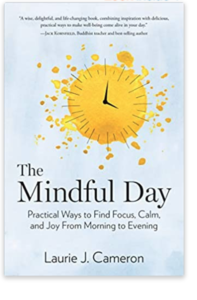 The Mindful Day: Practical Ways to Find Focus, Calm, and Joy from Morning to Evening
The Mindful Day: Practical Ways to Find Focus, Calm, and Joy from Morning to Evening
Author: Laurie J. Cameron, published in 2018
This guidebook takes you through everyday mindfulness routines, from the moment you wake up to the instant you fall asleep. Expect to learn more about mindful moments, reducing multitasking tendencies, and living mindfully.
What makes this a great read: This detailed guide to mindfulness comes with easy-to-follow routines and relatable everyday scenarios in which to practice mindful meditation.
Who should read this: This mindfulness book is perfect for beginners looking to integrate mindfulness into their daily lives through step-by-step practices and exercises.
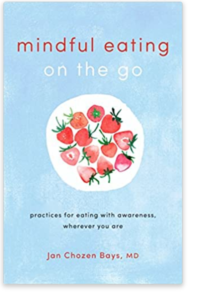 Mindful Eating On the Go: Practices for Eating with Awareness, Wherever You Are
Mindful Eating On the Go: Practices for Eating with Awareness, Wherever You Are
Author: Jan Chozen Bays, MD, Shambhala, published in 2018
Summary: In this mindful read, you’ll find out about the “nine aspects of hunger”, and how to approach your dietary needs with objective awareness. It’s all about nourishing a healthy relationship with food.
What makes this read valuable: Few books focus on the niche of Mindful Eating. I tried a mindful eating practice once in an MBSR class and it left quite an impression. All we did was pay close attention to all the processes involved in eating one raisin. It was a surprisingly intense and hilarious experience.
This book does a great job of breaking down those processes in entertaining detail so you can practice on your own and get a deep understanding of eating mindfully.
Who should read this: If you’re a foodie, or wish to explore mindfulness beyond its surface practices, this could be a great book to check out.
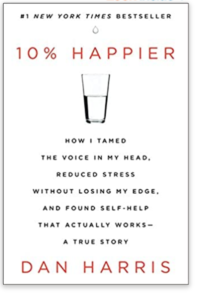 10% Happier
10% Happier
Author: Dan Harris
Published in: 2014
Summary: Rather than a step-by-step mindfulness guide or theoretical read, this book is all about Dan’s relationship with meditation. It’s a personal narrative that can help you understand the value of meditation on a real person, and consider whether it’s the right form of mindfulness for you.
What makes this book great: Most mindfulness books tend to be very technical or instructive. On the contrary, this one involves a compelling narrative from a very relatable first-person perspective.
Who should read this: This book is great for individuals who are interested in meditation but unsure or skeptical about the benefits.
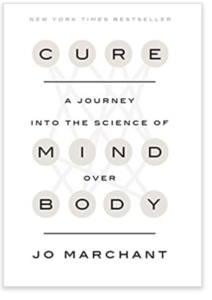 Cure: A Journey Into the Science of Mind Over Body
Cure: A Journey Into the Science of Mind Over Body
Author: Jo Marchant
Published in: 2016
Summary: One of the great things about Mindfulness is its depth of scientific supporting evidence. This book explores just that, delving into the science of how your mental activity can directly impact your physical health. Among other fascinating facts about mindful meditation, you’ll learn how it can be an effective preventative practice – reducing the likelihood of developing conditions like depression, anxiety, and dementia, among others
What makes this read special: The benefits of mindfulness and meditation on media tend to be explored in a very emotional and subjective manner, simply because the benefits are amazing on an individual level. For those who are uncertain about the benefits, this form of discourse often seems unreliable and sometimes, purely fanatical. This read explores the scientific relationship between our thoughts and our well-being, bringing a breath of fresh air and tinge of objectivity into mindfulness in the media.
Who should read this: If you’re skeptical about the world of mindful thinking and want to understand the scientific backing behind it, this book will be great for you.
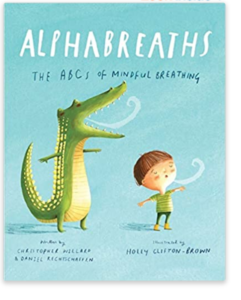 Alphabreaths: The ABCs of Mindful Breathing
Alphabreaths: The ABCs of Mindful Breathing
Author: Chris Willard, David Rechtschaffen, and Holly Clifton-Brown
Published in: 2019
Summary: Want to practice mindfulness with your kids? Start with easy breathing exercises, which are outlined in this engaging read through fun activities and adorable illustrations.
What makes this special: The authors specifically utilized psychological techniques to make this both a fun and engaging read for kids. Mindfulness is such an important tool that it’s no surprise that parents would love to introduce it to kids while they’re young. This book makes a complex, adult-like topic accessible to young kids.
Who should read this: Parents looking to introduce mindfulness to their young ones should start with this and subsequently build on these teachings.
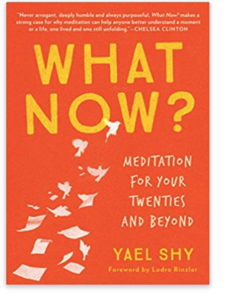 What Now? Meditation for Your Twenties and Beyond
What Now? Meditation for Your Twenties and Beyond
Author: Yael Shy
Published in: 2017
Summary: Your twenties can be fun, but not always easy. There’s pressure around tech-life balance, achieving success at a young age while finding love in this increasingly digitized era. Starting a new career and finding your work-life balance can lead to stress and anxiety which can be worked through by learning and practicing mindfulness. This book provides great advice, from a millennial herself, on how to integrate mindfulness into a stressful modern-day lifestyle.
What makes this special: This book is specifically targeted to millennials and a digitized, modern lifestyle. Many mindfulness books hare too heavy on the history of mindfulness, or the origin of the practices. This book goes above and beyond by outlining mindfulness in today’s culture and in the context of an increasingly digitized and fast-paced world.
Who should read this: Young adults interested in learning mindfulness while tackling the many other issues in their lives.
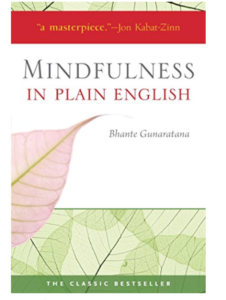 Mindfulness in Plain English
Mindfulness in Plain English
Author: Bhante Gunaratana
Published in: 1994
Summary: In this great mindfulness book, a monk and meditation master guides us through the many misconceptions, benefits, and the overall practice of mindfulness. It’s eye-opening and a fresh way to think of this accessible and empowering practice.
Why we love this one: Bhante’s writing style is clear, witty, and robust which makes learning about meditation more fun. Not to mention, John Kabat-Zinn calls this book “A masterpiece”. Enough said?
Who should read this: Those who are interested in or just beginning meditation practice – this is a fantastic resource for how to make meditation work for you, as well as how to live mindfully and productively.
In summary…
There are plenty of reasons to learn mindfulness and many ways to learn the practice including great books like the above, great apps, and in-person courses, classes, or retreats. It’s an applicable, valuable skill set to learn, regardless of the way you choose to learn it.
If you go with a book, choose one that’s digestible, enjoyable, and most compatible with your level of interest. Let us know which mindfulness book you decided to pick up and what you think of it!
Check out more mindfulness books and resources here!
